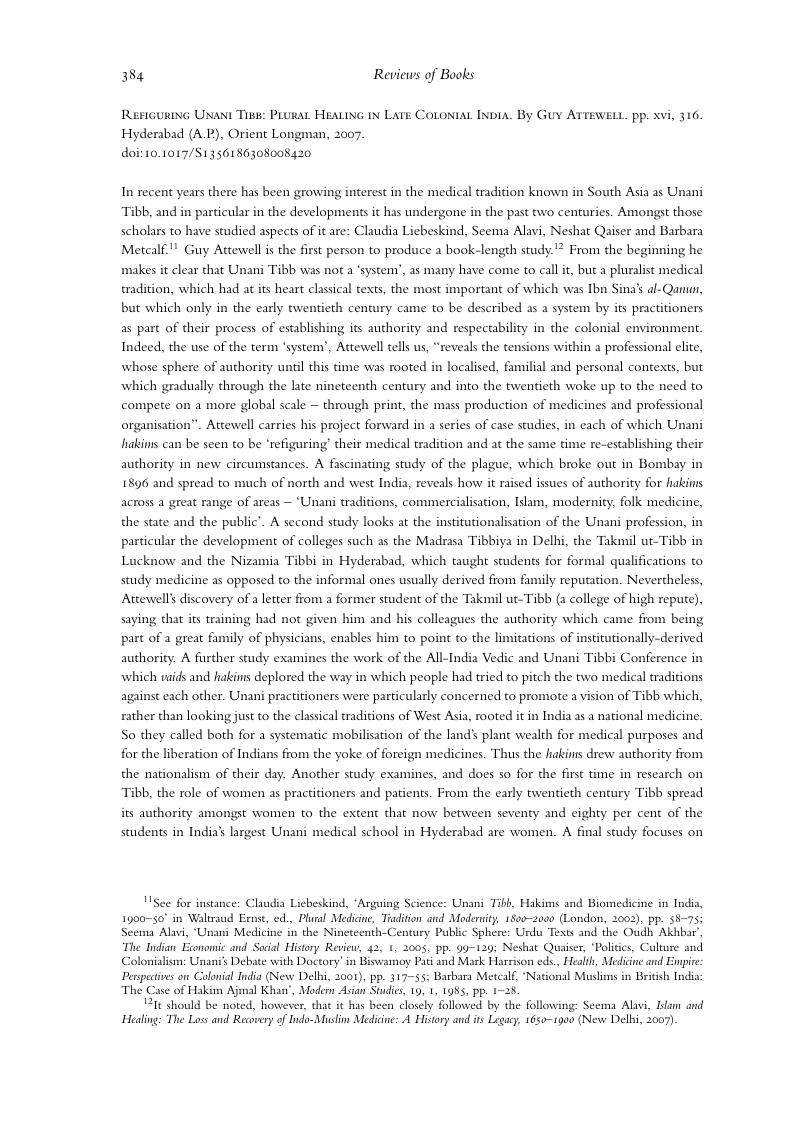No CrossRef data available.
Article contents
Refiguring Unani Tibb: Plural Healing in Late Colonial India. By Guy Attewell. pp. xvi, 316. Hyderabad (A.P.), Orient Longman, 2007.
Published online by Cambridge University Press: 17 July 2008
Abstract

- Type
- Book Review
- Information
- Copyright
- Copyright © The Royal Asiatic Society 2008
References
1 See for instance: Liebeskind, Claudia, ‘Arguing Science: Unani Tibb, Hakims and Biomedicine in India, 1900–50’ in Ernst, Waltraud, ed., Plural Medicine, Tradition and Modernity, 1800–2000 (London, 2002), pp. 58–75Google Scholar; Alavi, Seema, ‘Unani Medicine in the Nineteenth-Century Public Sphere: Urdu Texts and the Oudh Akhbar’, The Indian Economic and Social History Review, 42, 1, 2005, pp. 99–129CrossRefGoogle Scholar; Quaiser, Neshat, ‘Politics, Culture and Colonialism: Unani's Debate with Doctory’ in Pati, Biswamoy and Harrison, Mark eds., Health, Medicine and Empire: Perspectives on Colonial India (New Delhi, 2001), pp. 317–55Google Scholar; Metcalf, Barbara, ‘National Muslims in British India: The Case of Hakim Ajmal Khan’, Modern Asian Studies, 19, 1, 1985, pp. 1–28CrossRefGoogle Scholar.
2 It should be noted, however, that it has been closely followed by the following: Alavi, Seema, Islam and Healing: The Loss and Recovery of Indo-Muslim Medicine: A History and its Legacy, 1650–1900 (New Delhi, 2007)Google Scholar.




